All across the country, protestors have been tearing down old monuments. These monuments have been falling in the middle of historic protests against police brutality. Sparked by the murder of George Floyd in Minneapolis, these demonstrations have spread to communities, big and small, across the country and around the world. And as they’ve grown, the protests have become about much more than police violence. This national uprising has inspired a massive reckoning with our country’s past. Suddenly, decades of inertia and foot-dragging have given way to decisive action.
In 2018, we did a story about a couple of controversial monuments in New Mexico. They honored a Spanish conquistador named Juan de Oñate, who was an early settler in the region. We’re revisiting that story now because the statues have been back in the news again.
The Missing Foot
On January 7th, 1998, an envelope landed on the desk of Larry Calloway, a columnist with the Albuquerque Journal. Inside the envelope were some typewritten pages and a polaroid photo of a bronze Spanish riding boot. The note hinted that the bronze foot came from an equestrian statue of Juan de Oñate — part of a monument on the side of a rural highway near where Oñate founded the first Spanish colony in New Mexico way back in 1598.

Calloway figured this was probably a hoax, so he handed the tip-off to the newsroom to check it out. But when a reporter called up the visitor center at the Oñate monument, they discovered that sure enough: the foot was missing.
The Lesser-Known Conquistador
Oñate is one of the world’s lesser-known conquistadors, but his name can be found all over New Mexico. There are Oñate streets, Oñate schools, and for decades there was even an annual fiesta where one lucky guy would get to be Oñate — complete with a cape and helmet. In parts of New Mexico, he’s treated as a kind of founding father.
The envelope Calloway received, however, included an excerpt from a history book on Oñate’s treatment of New Mexico’s native people. It described an incident that ended with Oñate sentencing a group of men from Acoma Pueblo to each have one foot chopped off.
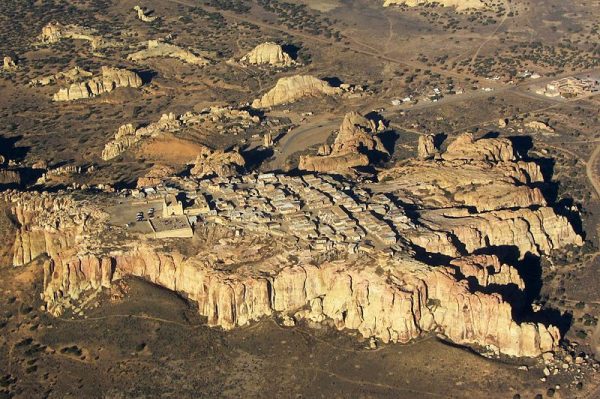
“It was sort of a combination of a press release and a ransom note,” Calloway explains, “and it said, ‘We took the liberty of removing Oñate’s right foot on behalf of our brothers and sisters at Acoma Pueblo. We will be melting this foot down and casting small medallions to be sold to those who are historically ignorant.’”
The statue’s sculptor used a cast of the remaining (left) foot to craft a new (right) foot, replacing the stolen one. No medallions appeared and the mystery remained — who had stolen Oñate’s foot?
Cuarto Centenario
1998 marked the 400th anniversary of Oñate’s arrival. There were “Cuarto Centenario” celebrations planned all over the state, complete with parades, theater, and a commemorative stamp. In a second note to the Albuquerque Journal, the anonymous foot thieves — calling themselves the “Friends of Acoma” — wrote: “We see no glory in celebrating Oñate’s fourth centennial, and we do not want our faces rubbed in it.”
The centerpiece of the Cuarto Centenario was a proposal for yet another bronze statue of Juan de Oñate. This one would be located in an even more prominent location — in Albuquerque’s historic center. But with all of this new attention on Oñate, the new statue wasn’t going to get built without a fight.
Conchita Lucero was one of the organizers of the 400th anniversary celebrations in Albuquerque — and one of the most passionate advocates for a new Oñate statue. This passion, she says, came from growing up in 1950’s New Mexico and not knowing much about her Hispanic identity or New Mexico’s two centuries as a Spanish colony.
All Lucero knew was that her Spanish ancestors had come to the state centuries before the Anglo classmates who called people like her “dirty Mexicans” — and that racism and ignorance of history were somehow connected. Lucero thought if she could just search out her own European roots, it would help her fight back.
None of this is uncommon in New Mexico, where people have been reaching back to their colonial roots and identifying as Spanish since the 1800s. After Lucero retired, she found a lot of like minds in local genealogical and historical societies. She learned how to use birth, death, and baptism records to trace her family tree — and discovered ancestors who were connected to Oñate’s 1598 expedition.
Lucero became part of the Cuarto Centenario committee who met with the Albuquerque Arts Board to discuss their request for a prominent new statue of Juan de Oñate — the man they called “the father of the Hispanic culture and our state.” And who the “Friends of Acoma” accused of destroying native peoples’ way of life.
Oñate’s Dark Legacy
Letters and legal documents paint a dark picture of what happened at Acoma Pueblo — the oldest continuously inhabited community in the United States — in 1598.
After thirteen of Oñate’s men came looking for food and were killed, Oñate declared a “war of blood and fire.” In the most brutal account of the battle that follows, Oñate’s soldiers killed hundreds of men, women, and children. They stabbed prisoners and threw them off the mesa. They set fires that suffocated women and children who’d taken shelter in sacred rooms known as kivas.
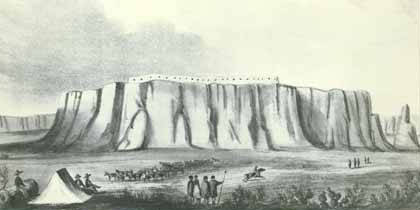
Then they rounded up five hundred prisoners and put them on trial. Oñate sentenced those over 12 years old to 20 years of slavery. Those who under 12 were separated from their families. The young girls were given to the church, and the boys to the captain who had just destroyed their village. The most infamous detail was detailed in a document signed by Oñate himself: “The males who are over 25 years of age, I sentence to have one foot cut off.”
His cruelty to the innocent at Acoma was one of twelve crimes for which Oñate would later be tried and convicted by the Spanish crown. As punishment, he would be banished, permanently, from the territories of New Mexico. Yet just as people in New Mexico were learning more of this history, the city of Albuquerque was considering building yet another statue of him.
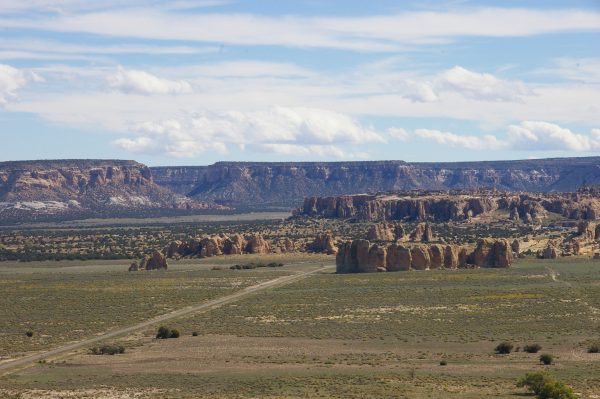
Acoma resident Aleta “Tweety” Suazo became the face of the opposition to an Oñate statue in Albuquerque. “He had been cast out of New Mexico forever, and now you want to bring him back and put him on a statue? It’s still mind-boggling,” says Suazo.
But it did not take long for the Albuquerque Arts Board to realize that another triumphant statue of Oñate on a horse would be a bad look for the city. And so by the time the foot was cut off the old statue on the side of the highway they’d made a few changes to the plan.
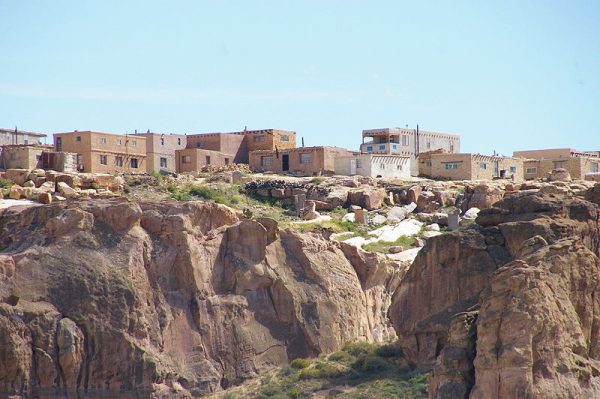
The memorial would need to depict not just Oñate, but also the peaceful settlers who came with him, and the Native Americans who preceded and survived him. The exact form the memorial would take would be up to a team of artists.
Everybody’s a Critic
The Albuquerque Arts Board had a team of two artists in place. Right before the newspapers got wind of the missing foot, they decided to add a third. Her name was Nora Naranjo-Morse.
The three-person team was comprised of a Hispanic artist who had built the statue that had its foot stolen, an Anglo artist, and Naranjo-Morse — a Tewa Indian artist from the Santa Clara Pueblo. The effort was pitched to Naranjo-Morse as a “tri-cultural collaboration.” But from the beginning, it got off to a rocky start.
When Naranjo-Morse arrived at the first meeting, the other two artists wheeled in a model of a statue they’d already put together. It was another triumphant statue of Juan de Oñate on a horse. They told her she could work on the granite pedestal beneath Oñate’s horse’s feet. “I felt insulted, I felt hurt, I felt marginalized,” said Naranjo-Morse.
The artists went back to the drawing board, attempting again and again to arrive at a shared vision for the project. The year of the 400th anniversary — 1998 — came and went. And there was still no plan for the memorial.
But the city would not give up. All the attention had made the memorial a very public test of whether the state was the land of tricultural harmony that it claimed to be. And so every time the process hit an impasse, the city just threw more time and money at it — hiring mediators and forming committees.
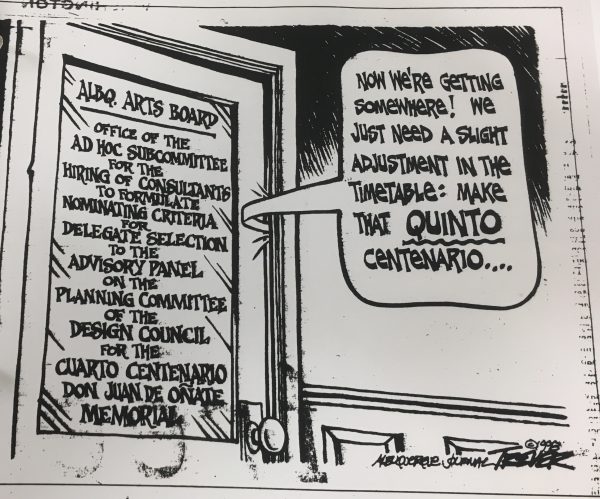
At one point, one of those committees came up with a plan that would have restarted the whole artistic process — a plan Lucero’s side couldn’t tolerate. It called for a memorial without Oñate.
As far as Conchita’s group was concerned, the presence of Oñate was non-negotiable. Which made it hard to negotiate. In the end, there simply was no single design that everybody could agree on. In fact, eventually the artists stopped talking to each other.
Instead, they proposed a memorial made up of two separate artworks: a series of bronze statues of Spanish settlers, including Oñate in full armor, and Naranjo-Morse’s response, an abstract land art installation made out of the desert itself.
The project had gone from a small bronze statue to a memorial that would take up most of a city block — and cost over half a million dollars — requiring the city to issue special bonds. Now the question was: Would the city approve it?
No Longer Abstract
In a series of meetings, the city council auditorium was divided. On one side was the pro-Oñate crowd, made up mostly of Hispanic people around Lucero’s age. On the other side was the anti-Oñate group, who tended to be younger and more diverse. They included Native Americans, Anglos, African-Americans, and a lot of people who identified as Chicano or mestizo — many were interested in explicitly embracing their indigenous as well as European ancestry.
In hour-after-hour of public comment, the two sides went back and forth — but not over the design over the memorial. They were fighting over something much bigger and more personal — their place in American history.
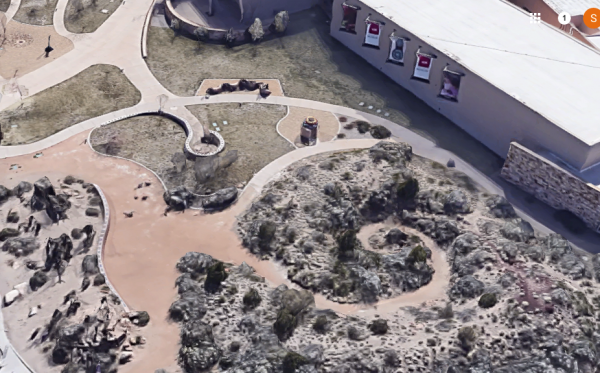
It seemed like most people were on the anti-Oñate side. But if the city voted against the memorial, it wouldn’t just be saying no to the memorial. It would be admitting that this whole very public process had been a failure. So when it finally came time to vote, they voted 7 to 2 to build the memorial.
After the vote, Conchita Lucero told a reporter, “I think our kids will finally learn about their ancestors.” Tweety Suazo and other anti-Oñate activists formed a prayer circle in the City Council chambers and wept.
Suazo thinks that if something like this happened again the outcome might be different. “I think Pueblos are just a little bit more politically astute now,” she says. Suazo says they learned that the right arguments aren’t enough — you need the right decision-makers. She’s one of several anti-Oñate activists who went on to get involved in electoral politics. She’s now the chair of the Native American Democratic Caucus of New Mexico. In this last election cycle, she helped raise money and get out the vote for Deb Haaland, one of two Native American women who just became the first to ever be elected to Congress.
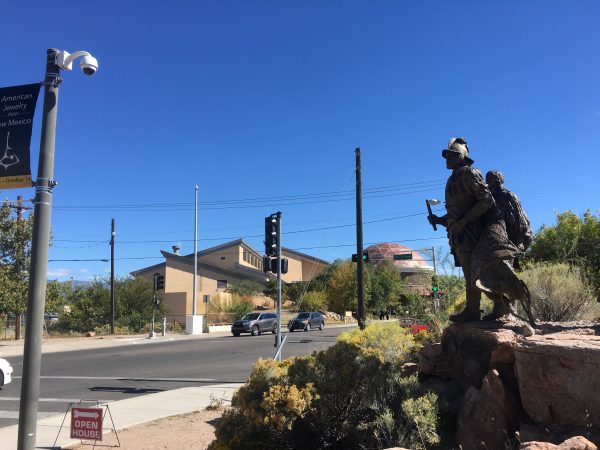
Today, if you go and visit the finished memorial, what you see isn’t Oñate on a horse. It’s a compromise. It’s really two memorials crammed into one.
The first is more than two-dozen life-sized bronze figures — men and women, oxen and sheep, trudging up a hill. Juan de Oñate is in front — on foot and under the watchful eye of a security camera that may or may not be pointed at his feet.
The second memorial, right next to it, looks like a huge dirt spiral. This is Naranjo-Morse’s contribution. The dirt path spirals slowly downhill, into the ground. As you walk it, the street disappears behind berms of chamisa and juniper. Then the buildings, then Oñate himself. Until finally, at the center of the spiral, all you can see is the land.
If you sit low to the ground you can almost get a glimpse of a world before Oñate arrived. It’s an escape, but it’s also intended as a confrontation — between two totally different worldviews.
“You see that in some ways when [the Spanish] came they brought us great opportunity, but at such a high cost,” says Naranjo-Morse. “The brutal colonization was forever affecting to us… and I think we should never forget that.”

This piece was reported by Stan Alcorn and edited for 99% Invisible by Senior Editor Delaney Hall. A different version aired on Reveal.
Reveal is out with an ambitious new project. It’s an 8-part series called American Rehab. The series traces the history of a widely-used form of drug rehab that claims to cure people by putting them to work for no pay, including at big corporations like Exxon and Walmart. Reveal traces the roots of this model to a dangerous cult called Synanon. In the midst of the country’s opioid crisis, American Rehab uncovers how tens of thousands of people are caught in the gears of this rehab machine. Listen to American Rehab now by subscribing to Reveal wherever you get your podcasts.



Comments (1)
Share
Loved this episode when I first heard it two years ago. I’m happy that it’s making a comeback!